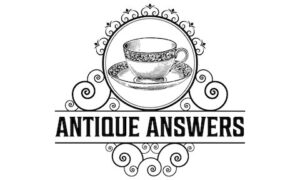All colors of Depression glass are incredibly cool to look at and are coveted by antique collectors. One of the most novel varieties of depression glass is the green-tinted jadeite glasses.
Green depression glass refers to the green-colored version of a certain style of cheap glasswork produced in the United States during the Great Depression Era. Green depression glass got its green color from the use of Uranium Oxide in the glassmaking process.
However, there’s a lot more you need to know about Green Uranium glass. It’s one of the most unique cultural pieces that can be found across the United States.
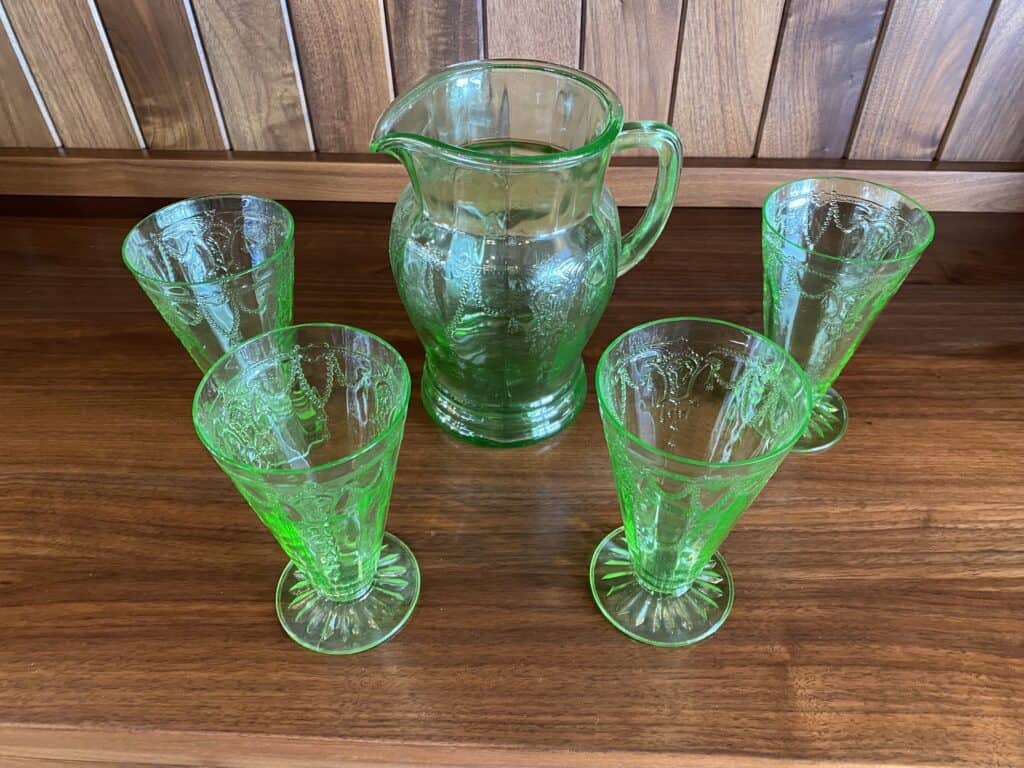
What Is Green Depression Glass?
Depression glass refers to glass that was produced from 1929 to 1939, a time known as the Great Depression Era. It was mass-produced during a time when materials were very expensive, meaning that many cost-saving measures were used in production.
Depression glass is very thin and delicate, as it was meant to be sold cheaply to retailers or product producers to be bundled with different products as a reward for purchase, such as a toy in a cereal box. But customers often bought this glassware separately as well, as it was inexpensive but still a good product.
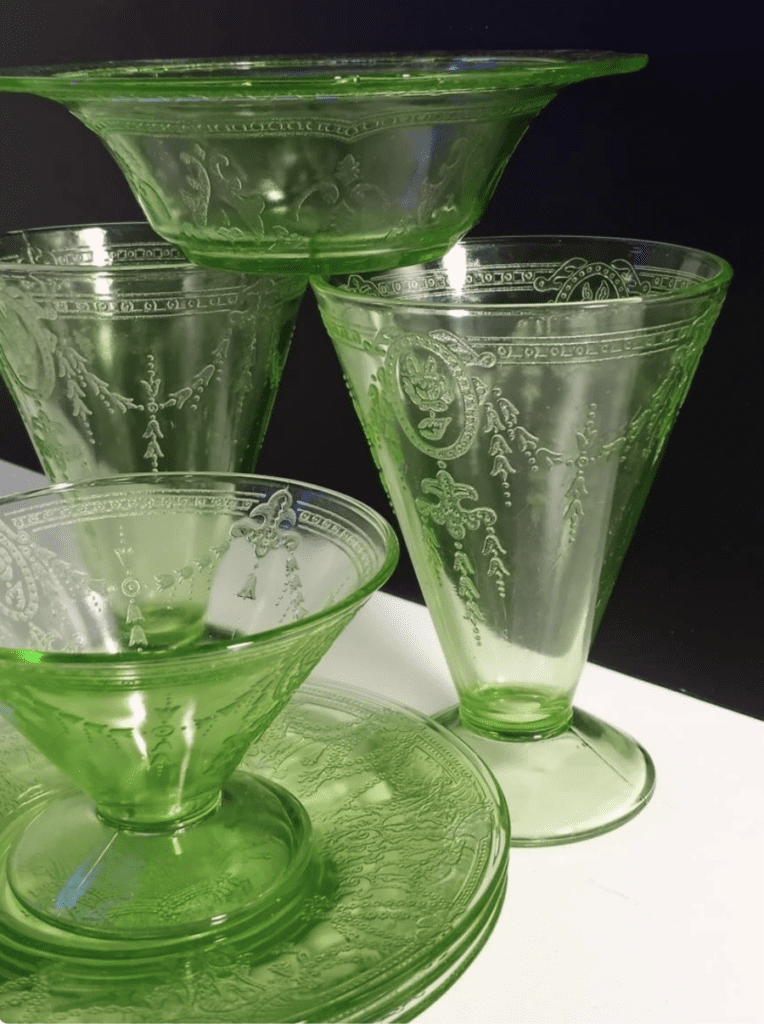
Green depression glass was made from 1930 to 1934 and was extremely popular. Its claim to fame is its green color that comes from Uranium Oxide. Not only does green depression glass have a very distinct translucent green coloring to it, but it also glows a radiant green color under a black light from the Uranium.
There are three different types of green depression glass:
Jadeite
Jadeite depression glass is unique for its strong green color. While ordinary green depression glass has a green tint to it but is still mostly translucent, Jadeite is fully opaque. It is a striking color and is coveted by collectors. Jadeite depression glass is increasingly rare and valuable.
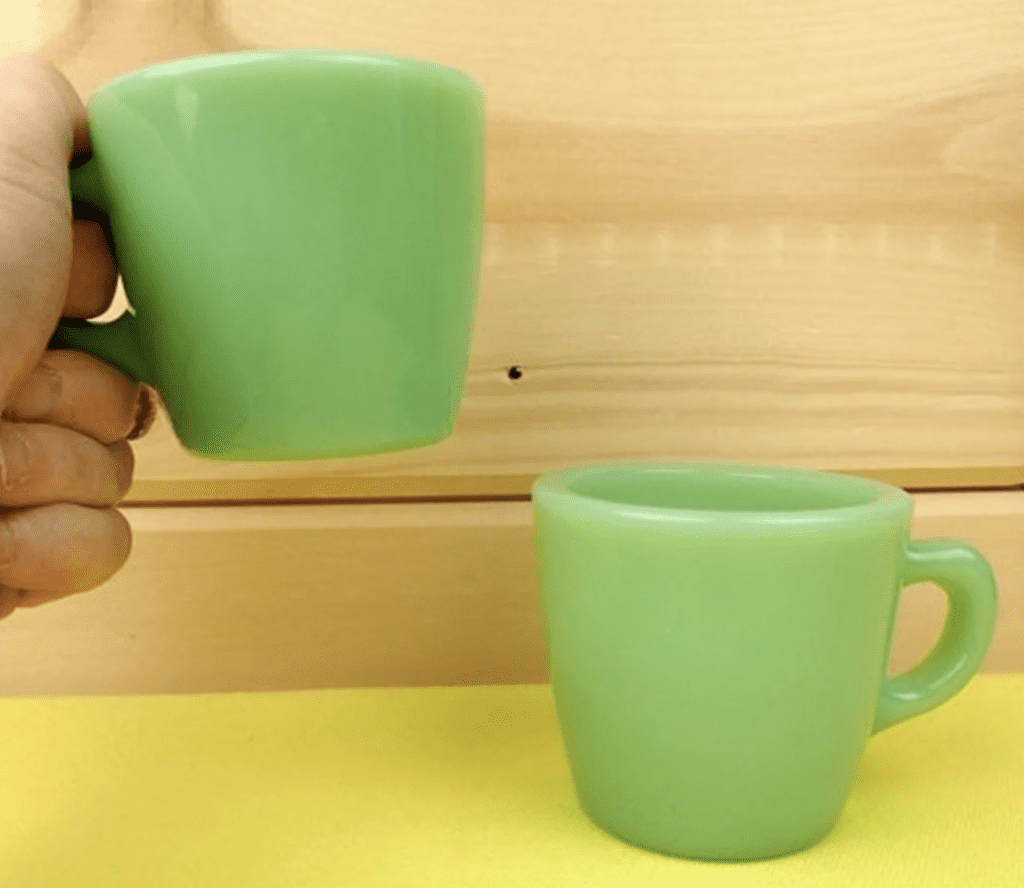
Green
This is your standard green depression glass. It can be recognized easiest by its reaction to UV light, but overall green depression glass looks like glass that has a green tinge to it. It distorts but does not hide what is inside like jadeite depression glass.
Vaseline glass gets its name for its yellowy-green tinge, which reminds a lot of people of petroleum jelly. It’s debatable whether Vaseline glass is actually green, but it glows bright green under UV light and is made with the same materials, so it is typically categorized as green depression glass.
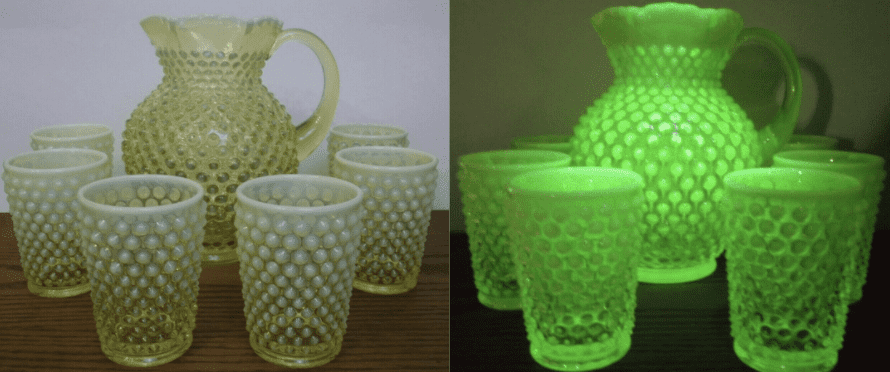
Is Green Depression Glass Safe To Use?
If you know anything about Uranium, then you’re probably wondering if it’s a good idea to eat off of dishes that have any level of Uranium content.
There are two things that make Uranium dangerous: the first is radiation, which can cause cell damage and sickness over time, and the second is Uranium dust, which can get trapped in the body and lead to radiation poisoning.
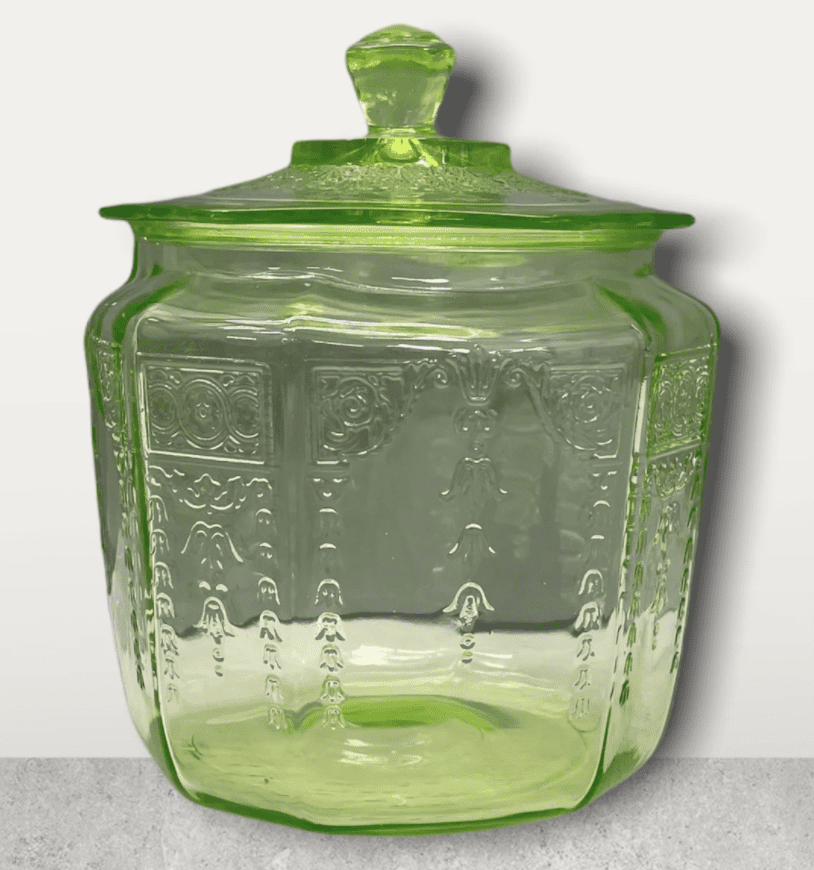
If there isn’t an especially high Uranium content in an object, it probably won’t be terribly dangerous from that standpoint, but if even a small amount of Uranium dust is released by the object, you can get radiation poisoning.
Fortunately for collectors, Uranium glass from the Great Depression Era, also known as green depression glass, is completely safe to use. Because its actual Uranium content is so low, it isn’t more radioactive than a banana.
More importantly, because the Uranium is sealed within the glass, there’s no way for it to end up in the air or onto your food, so you aren’t exposed to the harmful chemicals by eating off of it. Because of this, green depression glass can be used just like any other glassware.
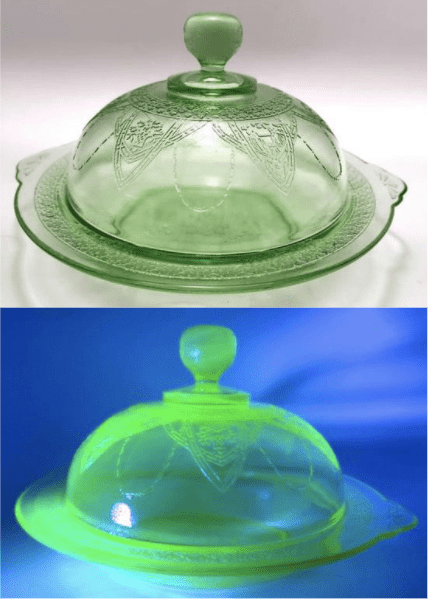
That being said, there are kinds of Uranium glass that contain much more uranium than green depression glass does, especially if it was produced before the 1920s. This glass might be dangerous to use because of its high radioactivity. Fortunately, these pieces are fairly rare, and depression glass is distinct enough that you likely won’t mistake it for older, more dangerous glassware.
How to Tell if Depression Glass Is Legitimate
Usually, it takes a significant amount of work to determine whether a piece of depression glass is the real thing or not. The pink, yellow, blue, and crystal varieties are fairly easy to replicate, although most replicas are imperfect and therefore easy to catch.
It is incredibly easy to tell whether a piece of green depression glass is a fake or not, as fakes usually seek to replicate its green color without using Uranium. Because different materials are used, the color is slightly different.
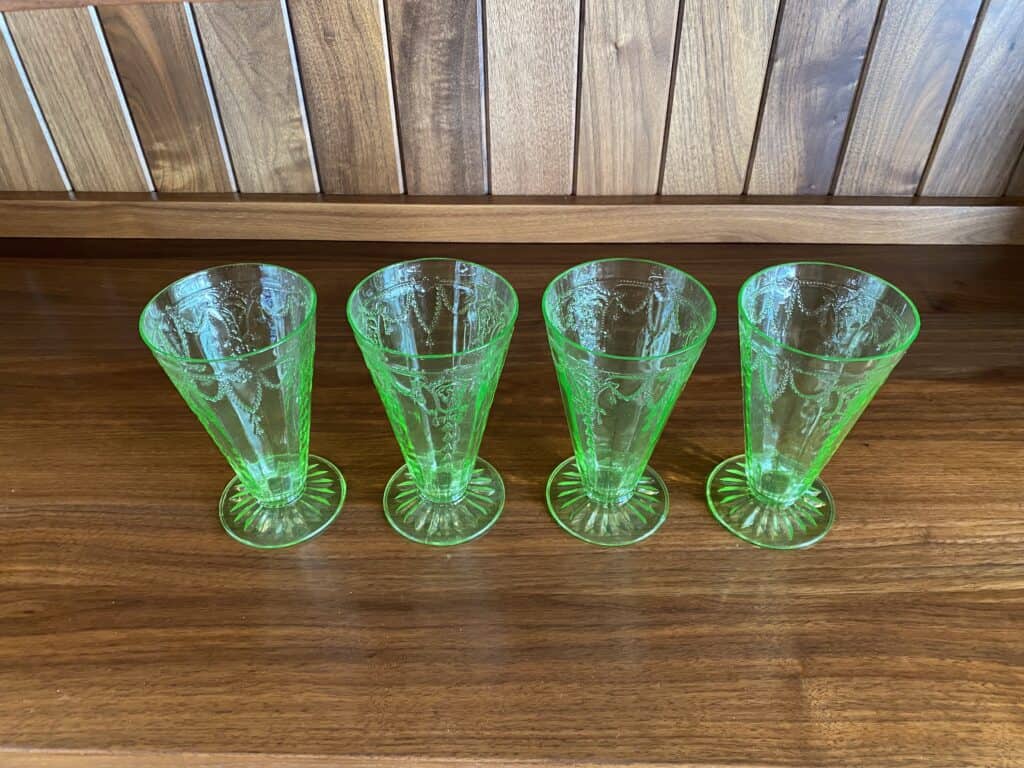
Because of this, if you’re out looking for green uranium glass, all you really need to do is shine a UV light on anything that looks like it might be what you’re looking for, and if it’s green, then it’s real. You can get a handheld UV flashlight for less than ten dollars online, which makes this an essential tool for any antique lover.
All depression glass has seams on the side and lines on the bottom. The lines on the bottom appear because when green depression glass was made, the glass was dried on thin strands of straw. The straw left lines imprinted on the glass. So, look for seams and lines to know if your green depression glass is real or a replica.
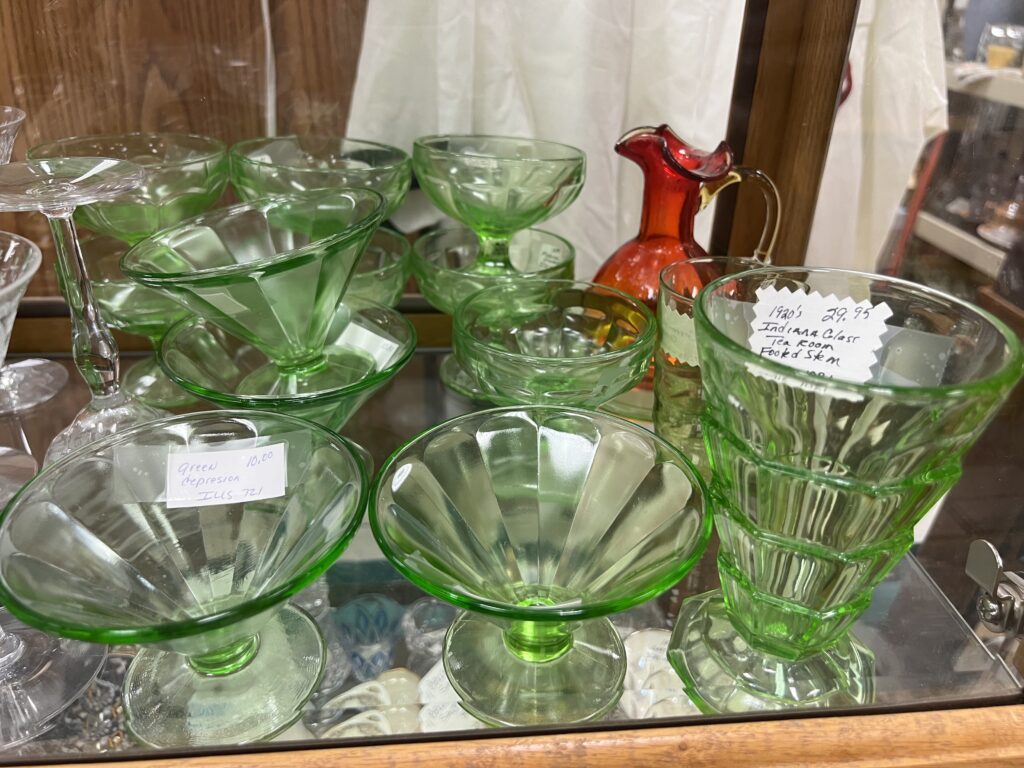
Where to Find Green Depression Glass
Depression glass can commonly be found at antique dealers. Most antique dealers that carry glasswork have at least a few pieces of depression glass to offer. This is mostly because of how widely distributed it was while it was being produced.
Light green depression glass is fairly easy to find at these kinds of places, especially if you live in a place where there are multiple antique stores.
The types of pieces that are easy to find are those that are the most often used: plates, cups, and small bowls. Trays and large bowls are harder to find.
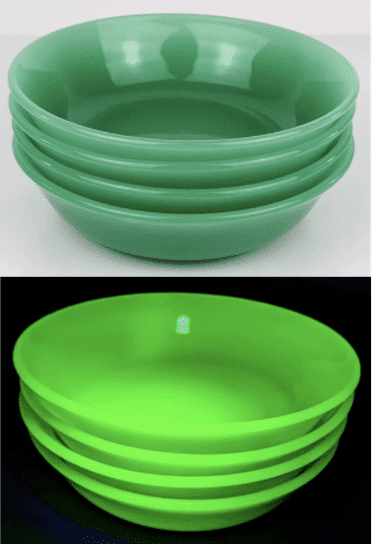
Jadeite pieces are far more difficult to find, as they weren’t made as often and they have a much more sought-after color. Genuine vaseline glass can also be fairly difficult to find, with the added challenge that comes with vaseline glass also being a colloquial term for Uranium glass. However, remember that true vaseline glass is actually more yellow than green in color, except that it does glow neon green in a blacklight.
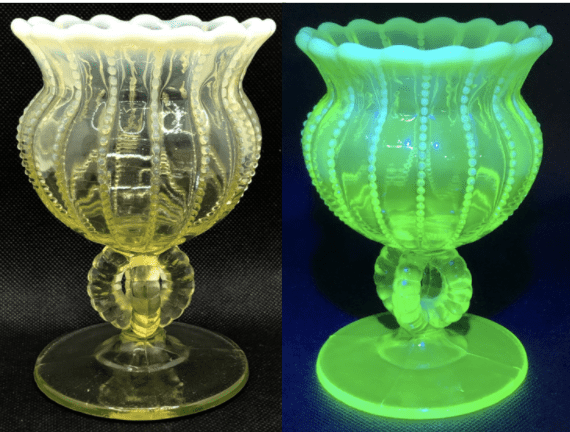
You can also look for green depression glass online, but there’s a significantly higher chance of accidentally purchasing a replica instead of a real piece of depression glass. Search on Etsy for well-reviewed shops that sell depression glass.
If you have older relatives who still have their old glassware, you might also be able to find green depression glass sitting in their cupboards. However, it is not recommended to try and take your great-grandparents’ glassware without permission!
Is Green Depression Glass Expensive?
Like with rarity, it really depends on the kind of green and the specific piece. Cups, bowls, and plates will probably cost between three and ten dollars depending on the location and the quality of the piece.
More intricate pieces with less common coloring, such as a jadeite water pitcher, might be worth significantly more, with prices ranging from $20 to $150.
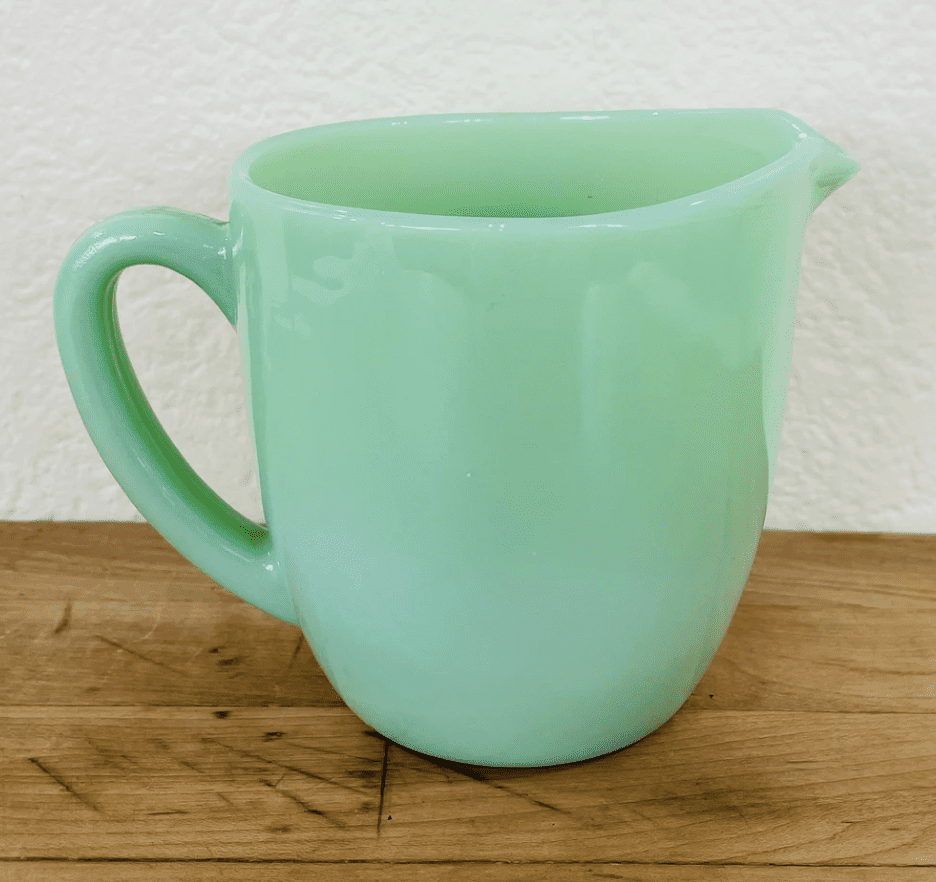
There are a lot of different factors that play into this, from rarity to quality. There were two kinds of depression glass produced—the more common kind is the one that was mass-produced for consumption by the general populace, which is usually still fairly cheap even today. The second was still mostly mass-produced but had a lot more individual attention put into the finishing process. Pieces like this might have more impressive detailing or might just generally look nicer. This second kind is significantly rarer and thus commands a higher price.
Especially for rarer pieces, the condition also plays a big part in determining the price. Things that might lessen the price of a piece of depression glass include glass sickness (a condition in which repeated machine washing causes a permanent fog in a clear piece of glass), scratching, chips, water rings, and cracks.
If you think that a piece of green depression glass you have might be valuable, then you might want to find an expert to talk to. They’ll be able to better assess the rarity, condition, and context of your specific piece and give you a better idea of how much it might be worth.
Modern Reproductions
While professional reproductions of depression glass were fairly common, even right after the end of the Great Depression Era, it can actually be quite difficult to find reproduction depression glass on purpose on the internet in the modern day. This is because most places that sell reproduction work actively try to hide the fact that they’re trying to sell a reproduction.
While most reproductions of green depression glass tend to use less potentially hazardous materials than Uranium (while uranium glass is safe to use, it’s incredibly dangerous to make) some devoted reproductions do still have that distinct Uranium glow when placed under a UV light.
There are a few other qualities that you can investigate when trying to spot a reproduction. Reproductions often use slightly thicker, more durable glass. This glass isn’t just notably tougher than usual—it is also much less likely to chip or scratch, so easily spotted damage can also be a sign of a real piece of depression glass.
Some websites say you should compare potential reproductions to a database of popular patterns used at the time, but most reproduction depression glass was produced to look like a specific product from the time period. While this is a useful technique for eliminating obvious fakes, just because it has a pattern that was common at the time doesn’t necessarily mean that the piece is legitimate.
What’s more effective is checking the piece for tiny bubbles suspended just below the surface of the glass. These are caused by eccentricities in the period’s glass-making techniques, and since reproductions tend to use more modern equipment, they rarely have them. These bubbles are about the size of a period at the end of a sentence, so they are extremely small.
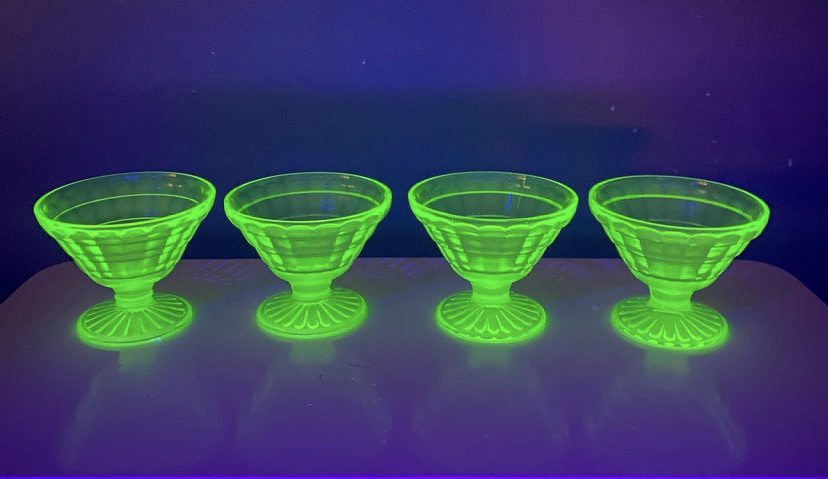
Cultural Significance
Uranium glass, jadeite, and vaseline glass come from a period of American history before the nuclear era when access to radioactive materials was commonly used by industrialists and artists alike for relatively innocuous purposes.
As a whole, depression glass represents a period before the widespread adoption of plastic where glasswork was the cheapest way to package materials or serve food. We still have large-scale glasswork industries across the world, but you’re unlikely to find a business that says they use glass as a cost-saving measure.
The kind of super-large scale that depression glass was made and distributed on is interesting in and of itself, even without considering the many patterns and colors that were used for its creation. In some ways, when you consider the low quality of the average piece of depression glass, they seem almost like hundred-year-old paper dishes.
However, that narrative is challenged by the intricate patterns cast into even the cheapest of dishes from the era. If nothing else, these objects were designed with care and intended to represent the aesthetic stylings of the age as much as they were designed to be produced at a low price.
Depression glass was seen as an extremely cheap replacement for china dishes. China dishes were extremely expensive, especially when you consider how poor people were during the Great Depression Era. Glass-making companies needed a way to make money, so they created a cheap replacement for china.
However, people still wanted their dishes to be beautiful, like what they had before the Great Depression hit. To satisfy that need, glass-making companies etched beautiful designs into their glass pieces.
Although depression glass is thin and was used daily, it has stood the test of time. This glassware that was once cheap and replaceable is now treasured by those who appreciate the quality of the product. Although there are lines, seams, and scratches in depression glass, these flaws prove that the glass is durable and was made during the Great Depression Era.
Moreso than plain modern dishes, depression glass is a product of its time. The story of an antique, like a piece of depression glass, is as fascinating as the piece itself.
Related: What’s the difference between depression glass, uranium glass, and carnival glass?
